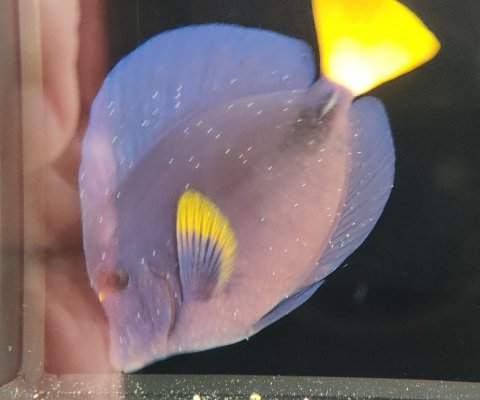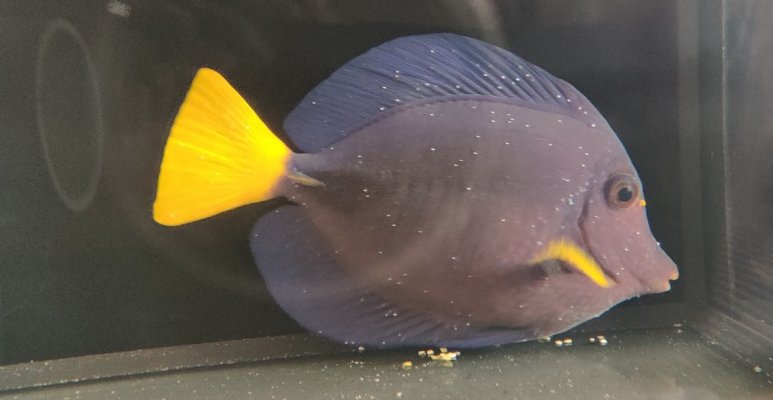Finally got it into the QT. Good thing is that it started eating in Q% almost immediately. Starting with a 1.5ppm Copper Power dose. Fingers crossed.
That's a moderately severe case of ich. If it was velvet, the fish would be breathing hard and not feeding. I have NEVER been able to manage ich at this stage of an infection.
You need to get the Copper Power dose up to full TODAY. Copper Power can take 3 days to start to work. If you take extra time going up slowly, it just gets harder to effect a cure. This whole "ramp copper up slowly" stems from when people used copper/citric acid meds, it doesn't apply to amine-based products. Indeed, we put fish into full copper all the time with no issues at all. The only reason I tell people to make two additions so is to ensure that they test between additions so they get an accurate dose (many people don't know the actual volume of their tanks).
Hold the fish in copper for 30 days, 14 days is not long enough.
Your biggest challenge is going to be managing the ammonia - if not properly managed, it will harm the fish. Then, since you are dosing copper, you will be inclined to say, "Jay was wrong, copper killed my tang" and I don't want that!
Other concerns that I have: given your timing, if I understand it correctly, the fish will be returned to the DT after only a month. That will likely result in reinfection. If that reinfection is mild, you may be able to manage it, since the tang will now have at least some resistance to ich, but remember, the fish remaining in your tank will most likely be harboring a chronic infection....
Jay Hemdal





















